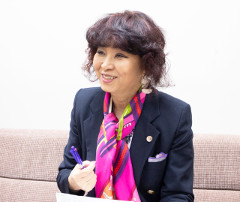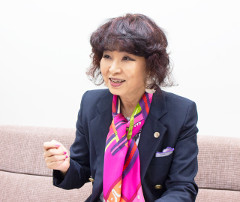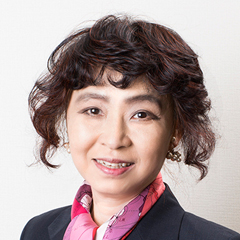The concept of the right to work has started to change

Even though workstyle reform tends to be regarded as an issue of labor-related laws, it is in fact related more deeply to constitutional law, in which the author specializes.
It is true that workstyle involves labor agreements between a company and an individual and a convention concluded between a company and a labor union, or relations between private enterprises/individuals. At a glance, these relations seem unrelated to constitutional law that regulates relations between a nation and a private individual.
However, the Constitution of Japan stipulates that its provisions apply directly at places of work. Specifically, Articles 27 and 28 apply. For example, Paragraph 3 of Article 27 prohibits exploitation of children (child labor). You may have heard about this. Also, Article 28 guarantees the basic labor rights of working people. These provisions address relations among private enterprises/individuals.
And Paragraph 1 of Article 27 stipulates the right to work. It says that, “All people shall have the right and the obligation to work.” Let us focus here on the right to work, setting aside the obligation to work for a while.
Conventionally, the right to work has been understood as a slogan, reflecting an obligation of the national government to make efforts to guarantee the right. Being a capitalistic nation, priority is given in Japan to private autonomy (where the people take care of themselves on their own, without intervention by the national government). Thus, regarding the right to work, the national government has focused on promotion of unemployment measures for employment security, such as by establishing an unemployment insurance system in case someone is unable to work even though he/she has an intention to and is capable of working but cannot fulfill the need independently.
The concept of the right to work stems from “The Right to the Whole Produce of Labor” written by Austrian jurist Anton Menger in 1886, about 130 years ago. At the time, harmful influences of capitalism started to emerge in European societies as the Industrial Revolution progressed rapidly, placing working people in an extremely difficult position. There was also an unemployment issue whereby anyone could get laid off any time regardless of his/her willingness to work or capacity, depending on the business situation. Thus, Menger advocated the concept of the right to live and the right to work, in order to remove unemployment and other harmful issues of the capitalistic economy.
It was the Weimar Constitution enacted in 1919 in the Weimar Republic, exactly one hundred years ago, that inherited the concept. The Weimar Constitution is famous as a modern constitution that stipulates social rights. You may have heard of this Constitution, which was the first republican constitution enacted in Germany after abolishing imperial rule. The Weimar Constitution establishes the right to live from a viewpoint of maintaining order in economic activities (Article 151). It also stipulates workers’ right to organize (Article 159), the right to work, and the obligation of the national government to consider unemployment (Article 163), in addition to the right to live.
The Constitution of Japan takes over the ideas of the Weimar Constitution. In fact, Japanese society was full of unemployed people in 1946 when the Constitution of Japan was promulgated, right after the Second World War. Under the circumstances, unemployment measures were the most awaited regarding the right to work.
As can be seen, the right to work is influenced first by the reality of social and economic conditions. The Japanese economy and society went through huge turning points thereafter, and today even greater changes are taking place with regard to the situation surrounding the right to work.
Let us take a look at the process step by step.
Soon after the enactment of the Constitution of Japan, a period of rapid economic growth began. The period of rapid economic growth was, simply put, the period when the idea that “all Japanese people are middle class” was formed. To say it without fear of being misunderstood, the period of rapid economic growth was a time when “everyone was able to work vigorously, the Japanese economy continued growing as a result, and consequently everyone became wealthy and the all-Japanese-people-are-middle-class mentality spread.” During the period, the awareness among people on the right to work gradually diminished.
However, the economy slowed down thereafter and the working population that supported the period of rapid economic growth also started to change. Even though about 2 million babies were born in the year 1974, it was in this year that for the first time, the total fertility rate (the average number of children delivered by a woman in her lifetime) fell below 2.07, said to be necessary for maintaining the population at the current level. The population has continued to decline in Japan since then, and in 2016 the number of births fell below one million for the first time since the population statistics survey started in Japan.
The current total population of Japan is about 130 million, which is estimated to fall below 100 million by 2040. The population composition has also changed significantly in the past several years, and the aging population and declining birthrate pose problems these days. These are serious issues in view of the rapid decline in working population. It is already known that the issues are the cause of labor shortage.
Japanese society is now going through a transition period of significant change accompanying the aging population and diminishing number of children. On the other hand, awareness has heightened among Japanese people on gender equality (Articles 14 and 24 of the Constitution of Japan) and human rights, including being respected as an individual (Article 13) in today’s Japan after elapse of 70 years from the enactment of the Constitution of Japan. The awareness has firmly taken root in the lifestyles of people in their 30s and 40s in particular, who are in the prime of their working life. In view of these changes, the author believes that the right to work needs to be re-interpreted.
Since our lifestyle today is basically that of making a living by working, gender equality, the right to work, the right to live and being respected as individuals that are guaranteed by the Constitution of Japan are the very things that should be guaranteed in the way people work with private business entities.
When we try to position work in our lifestyles, we can never disregard the lives of individuals including ourselves and our loved ones such as our spouse, families, children and parents. And we only live once and relations last over long years. Here, sustainability is the keyword.
In view of the above, the author believes that the right to work is the right for each person to continue working in a comfortable work environment in order to live a life that meets certain basic standards, with consideration given to the circumstances of each individual. In short, it is the right to continue working in a good working environment.
The interpretation differs completely from the idea that equates the right to work with unemployment insurance, which was the case at the time of enactment of the Constitution of Japan. In order to make the right to work meaningful for working people today, the viewpoint of “continuing to work in a good working environment” should be incorporated in the interpretation of the right to work, shifting away from unemployment insurance by the state. The workstyle reform should also be regarded from the above viewpoint, and needs to be argued from a standpoint that promotes the right to work.
Reduction of long working hours is absolutely essential
There are three pillars to the workstyle reform, namely the reduction of long working hours, realization of diverse and flexible workstyles, and securing of fair treatment regardless of the type of employment.
First, the author believes that the reduction of long working hours to be absolutely essential. Penal provisions were stipulated for the first time on overtime work hours exceeding 100 hours in a month. This is a priority item of the workstyle reform. Actually, the Labor Standards Act of Japan does not stipulate an upper limit of overtime work hours. It was to be determined through an agreement between labor and management (labor-management agreement).
Being determined through a labor-management agreement indicates that the agreement was reached because not only the management but also the labor side wish to work long hours. Overtime allowance also seems to be involved. Herein we find one of the reasons why the issue of long working hours has never been addressed.
This is crucially important, because it relates to the idea of workstyle. From the viewpoint of the right to continue working in a good working environment, the idea to favor long working hours inevitably needs to be changed. On the other hand, reduced income from overtime allowances is a concern, and this needs to be taken care of. The time has come for labor and management to collaborate and think about a way to raise the basic wage rather than allowances by enhancing production efficiency through proactively utilizing AI and IT to reduce working hours, so that Japan may remove the stigma of being a nation supported by “karoshi” (death from overwork). Through such efforts, the corporate culture to value long work hours needs to be changed.
The period of rapid economic growth brought about a society where the husband goes to work every day while the wife stays at home and takes care of housework. On the premise that both man and woman are to work to make a living, the principle is now an illusion and no longer valid. For example, would a person who is single, young, physically strong, has a good job and is willing to work overtime for any amount today be able to work in the same style even after getting married and starting to raise a family? Would a person be able to continue working for long hours even after having a child, getting old, becoming ill, or if his/her spouse or child became ill?
Working for long hours is possible only when someone is at home and supports him/her. In reality, this seems to apply only to a few families these days. And what about the right to work and self-realization through work for the spouse/partner at home? To reduce long working hours, it is important to also consider the spouse/partner at home and think about building a working environment where all persons may continue working.
Also, to be noted is that the highly professional worker system that became an issue at the national Diet does not seem valid from the viewpoint of continuing to work soundly as a person. Even though workers are said to be “free to choose,” it would be difficult for a hired person to refuse when an employer proposes concluding a highly professional worker contract.
When recognized as a highly professional worker by an employer, a worker might need to work endlessly to enhance the quality of his/her work and realize achievements. Although the annual salary is 10.75 million yen or more, the worker might need to work without a limit in exchange. From the viewpoint of health management also, a certain limit needs be set on the number of working hours.
It is also a concern that although the types of profession to which the system applies is limited to five currently, the scope may be expanded when the Minister in charge issues a Ministerial Order to do so.
Building a workplace environment that enables everyone to continue working leads to enhancement of the right to work

Diverse and flexible workstyles also relate to the securing of fair treatment among employees of different modes of employment. This may be achieved if companies endeavor to eliminate the difference in treatment between a regular worker and a non-regular worker who is working under the same conditions as the regular worker.
The author was informed recently that some companies have tried to eliminate the difference while allowing flexibility in workstyles, as an increasing number of people today choose to work as non-regular workers because they are exempted from being transferred to a remote location. It is a favorable tendency.
Here, attention should also be given to the possibility of treatment being levelled out by reducing the allowances of regular workers. The salary system of Japanese companies is characterized by many types of allowances, but these might need to be studied and reorganized and furthermore the basic salary might also need to be revised. In such a case, regular workers might be asked to bear some losses.
Another issue is to deal flexibly with, for example, people who wish to work only six hours a day or work at home, instead of the standard eight hours a day of work, and to treat the people who work in diverse styles fairly. For example, a system should be developed where people working six hours a day are paid six-eighths the salary of standard workers but are not hindered in terms of promotion. Such an attempt has already been made in Europe and other areas.
Japanese companies have rarely accommodated such “diverse but equal” workstyles. It might be quite difficult for them to establish a system for fairly evaluating people working by diverse workstyles, set conditions and decide on their treatment.
However, it is important for Japanese society, where an aging population and diminishing number of children have progressed rapidly, to enable for example elder workers who are willing to work up to six hours a day to continue working and the people who are with young children or family members who need nursing care to continue working at home, thus certifying their right to work.
Therefore, it is a matter of urgency to establish a system and working environment that is friendly to everyone and enables everyone to continue working, in other words, a system to enable everyone to continue working in a good working environment.
By the way, the author was informed that meetings are being held at many companies among workers in line with the enactment of workstyle reform-related laws. At such meetings, however, people who are close to retirement age do not seem so interested, in contrast to those in their 30s and 40s who have taken part in the discussions with enthusiasm.
It is true that workstyle reform is a familiar and crucial issue for people in their 30s and 40s. Many married couples in these age groups are working couples, and both men and women share child-rearing and housework tasks. Bringing their children to a nursery or a kindergarten and picking them up when returning home are important tasks in their daily lives, for both men and women. For them, it is an important issue whether they are able to leave work 30 minutes earlier to pick up their children. It is quite important that everyone at a workplace listen to their views, and use their imagination to understand their circumstances.
Those who are close to retirement age are reminded that a working environment that is friendly to the child-rearing generation would also be friendly to them when they start working again after retirement. All workers may raise their voices to establish this kind of friendly working environment to assert their right to work, and this also accords with the new interpretation of Article 27 of the Constitution of Japan.
* The information contained herein is current as of May 2019.
* The contents of articles on Meiji.net are based on the personal ideas and opinions of the author and do not indicate the official opinion of Meiji University.
Information noted in the articles and videos, such as positions and affiliations, are current at the time of production.


